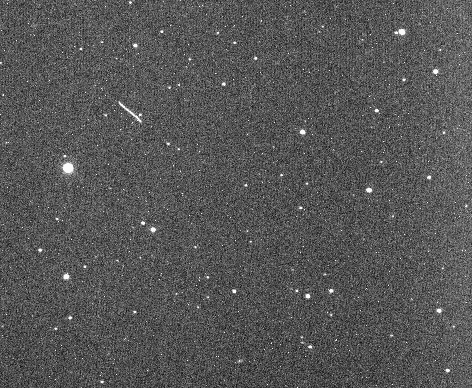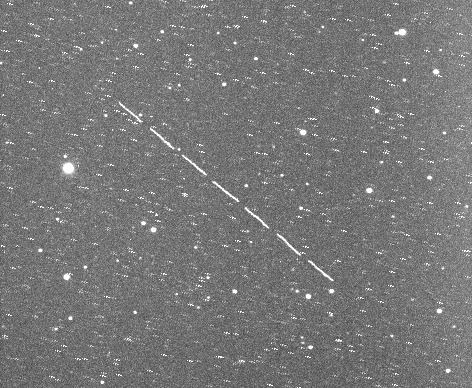Discovered only a few days ago, the house-sized asteroid 2011 MD whizzed by at only 7,600 miles above Earth’s surface on June 27 at approximately 1:00 p.m. EDT. This approximately 10-yard rock came closer than many communications satellites and will rapidly recede over the next few hours and days. Rob Suggs, operating a Marshall Space Flight Center telescope in New Mexico, captured several images of the asteroid on the night of June 26.

At the time these 30-second exposures were made, the asteroid was about 80,000 miles away from Earth. At such a close distance, the asteroid appears as a streak due to its motion relative to us, even in a short exposure.

Image courtesy of Rob Suggs, NASA’s Meteoroid Environment Office, Marshall Space Flight Center, Huntsville, Ala.

If we could detect an asteroid coming towards earth before few days time, then how can we be sure that if anything else – say planet X or something similar – comes. How can we be sure that we will detect anything before it is too late? Why did NASA denied its own discovery of an outer celestial body beyond Pluto in 1984? Is there any real need to hide it? Or is it done just so that people keep guessing about a non-existent thing & don’t interfere in the real goals or platforms. If that is the case then I salute you for the biggest magic trick. The magician makes an Elephant, A Building or Anything huge disappear, you made the whole planet
Thanks
Jeevan Kairon
Why did it “flash”?
Why can’t you put a solar powered radar orbiting earth, to find all potential asteroids that could enter in a colision course with us?
Amazing, I love science. I’m not a fan of conspiracy therorist and numb skulls though.
Why there is light ???
Why Life if exists is star is a planet though planets are ufos what happens when black holes are iman ???
When there is a lot of time / velocity there is light more light with anti-velocity / anti-time / time
11-12-11
Perhaps set up NEO program for 100 meter or larger objects for very near earth. Place a lunar orbiter with camera(s), looking for optical flashes from sunlight etc. Hence not yet arrived intersecting objects might be seen, rather after the fact encounters. Thus a larger data base of incidence of such encounters, and any additional risk.